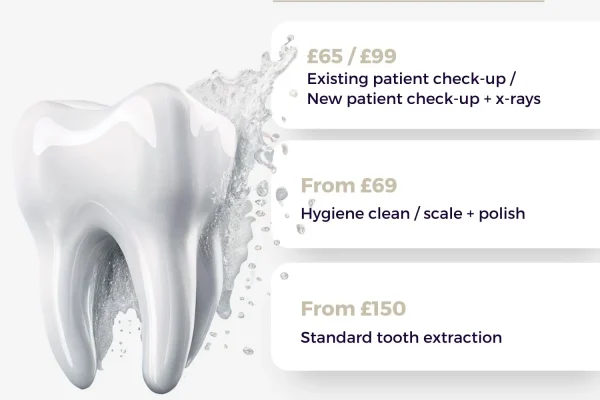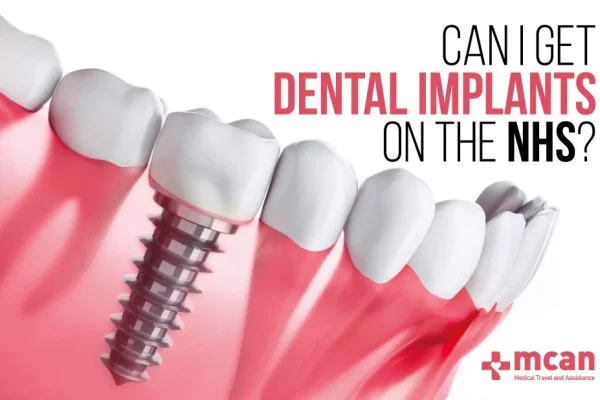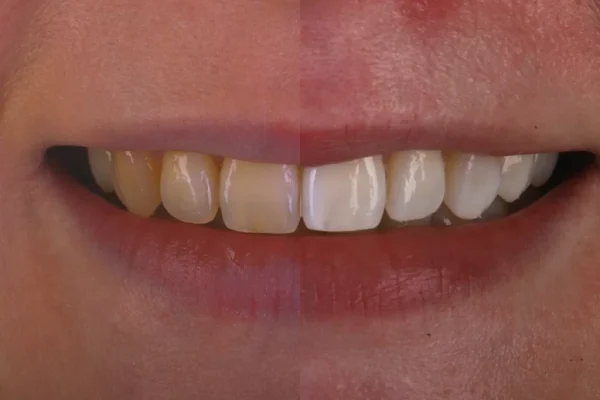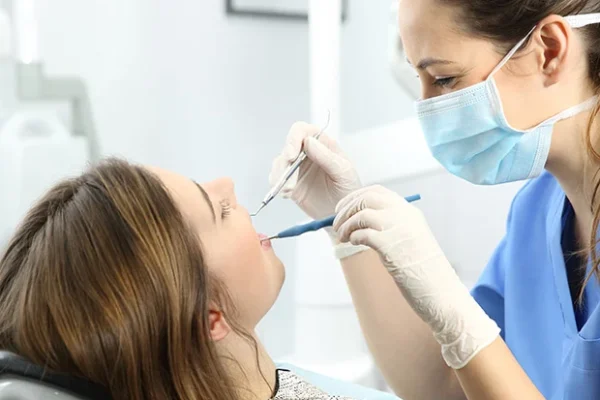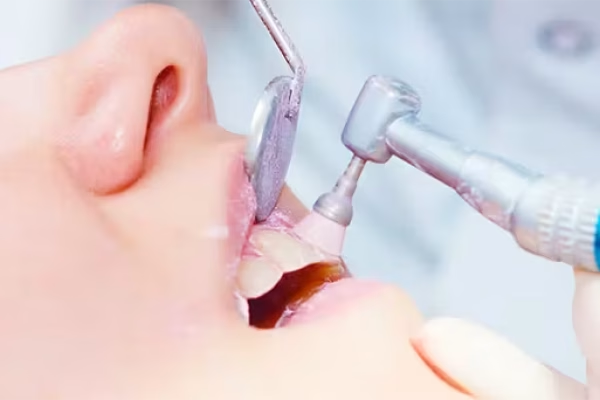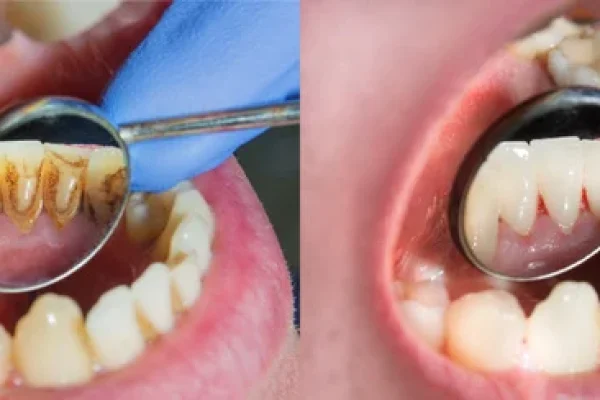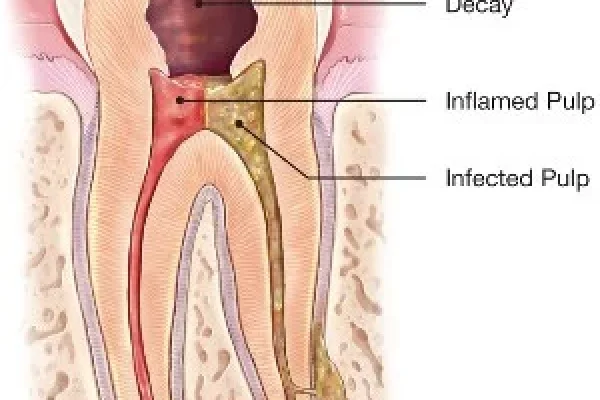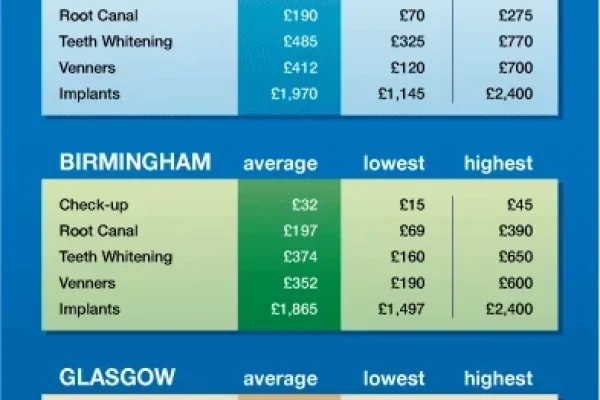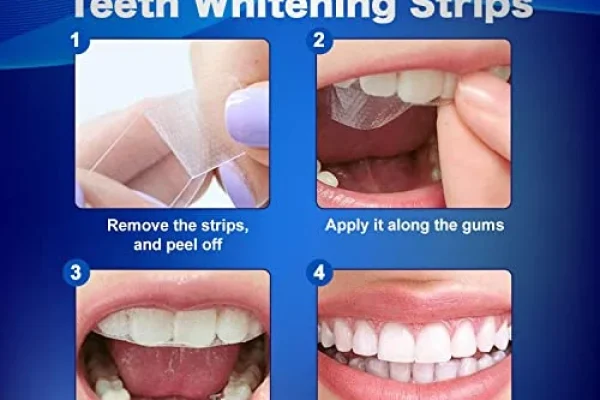
Key Takeaways
-
- “Teeth caps” and “dental crowns” are largely interchangeable terms referring to the same restorative dental treatment.
-
- Dental crowns are custom-made coverings that restore damaged or weakened teeth, improving their strength, function, and overall appearance.
-
- The procedure for getting a crown typically involves two dental visits: the first for tooth preparation and taking impressions, and the second for fitting the permanent crown.
-
- Various materials are available for crowns, including porcelain, zirconia, porcelain-fused-to-metal (PFM), and metal alloys, each offering different benefits in terms of aesthetics, durability, and cost.
-
- With proper care, including diligent oral hygiene and regular dental check-ups, dental crowns can last for many years, typically 5 to 15 years or even longer.
-
- The cost of dental crowns can vary significantly based on factors such as the material used, the complexity of the case, geographic location, and the dentist’s expertise.
-
- While crowns are a safe and effective treatment, potential risks include sensitivity, chipping, loosening of the crown, or decay at the margin if oral hygiene is not maintained.
What Exactly Are Teeth Caps and How Do They Differ from Dental Crowns?
Let’s tackle the terminology head-on, shall we? You hear “teeth caps,” you hear “dental crowns,” and you might find yourself wondering if you’re discussing two distinct entities or simply different names for the same heroic dental intervention. The truth, for the most part, is refreshingly simple: “teeth caps” and “dental crowns” are largely interchangeable terms referring to the exact same restorative dental treatment. “Cap” is the more colloquial, everyday term, perhaps born from the visual of a cap fitting snugly over a tooth, while “crown” is the more formal, clinical term preferred by dental professionals. Think of it like “spectacles” versus “glasses” – different words, same vision-enhancing purpose. So, when your dentist mentions a “crown,” or your friend talks about their “cap,” they’re both describing a custom-made, tooth-shaped covering that is meticulously designed to be placed over an existing tooth or, in some cases, a dental implant. Its primary mission is to encase the visible portion of a tooth that lies at and above the gum line, effectively becoming the tooth’s new outer surface. This isn’t about “fake teeth” in the sense of dentures replacing a missing tooth entirely; rather, a crown or cap is a sophisticated prosthesis that protects and restores an existing tooth structure that has been damaged, weakened, or is cosmetically compromised. It’s a shield, a reinforcement, and an aesthetic upgrade all rolled into one. The origin of the term “crown” itself evokes a sense of regality, a covering that bestows renewed integrity and status upon what it protects. In dentistry, this isn’t far from the truth. These restorations are vital for salvaging teeth that might otherwise be lost, restoring their shape, size, strength, and improving their overall appearance. For those in the UK, the term “dental crown” is standard, so if you’ve searched “what is a dental crown UK,” you’re on the right track to understanding this universal dental solution. The key takeaway is that whether you call it a cap or a crown, its function remains paramount: to provide a robust, durable, and often aesthetically pleasing solution for a compromised tooth, integrating seamlessly with your natural smile.
Why Might You Need Tooth Caps and What Are Their Benefits and Potential Risks?
The reasons a dentist might recommend “teeth caps” are as varied as the smiles they aim to perfect, but they all boil down to preserving and enhancing your dental health and aesthetics. One of the primary indications for a crown is to protect a weak tooth, perhaps one that’s been fractured or has a large, precarious filling, from breaking further. Imagine a tooth with a significant cavity; once the decay is removed, the remaining structure might be too fragile to withstand the forces of chewing. A crown acts like a custom-fitted helmet, absorbing those forces and preventing catastrophic failure. Similarly, if a tooth is already broken or severely worn down from grinding (bruxism) or other habits, a crown can restore its original shape, size, and function, effectively giving it a new lease on life. “Why do I need tooth caps?” is a perfectly valid question, and the answer often lies in the long-term preservation of your natural tooth. Another common scenario is to cover and support a tooth that has undergone root canal treatment. After a root canal, the tooth can become more brittle, and a crown provides essential reinforcement. Crowns are also instrumental in restorative procedures like holding a dental bridge securely in place or covering a dental implant to provide a functional and natural-looking tooth replacement. Beyond these structural and functional reasons, aesthetics play a significant role. If you have severely discolored teeth that don’t respond to whitening or teeth that are misshapen, a crown can offer a dramatic cosmetic improvement, transforming your smile. The “benefits of a tooth cap” are therefore manifold: enhanced strength, restored functionality for comfortable chewing, improved appearance, and the crucial protection of the underlying tooth from further damage. Patients often ask, “Are caps good for your teeth?” and “Are teeth caps safe?”. When expertly placed and made from biocompatible materials, crowns are indeed a safe and beneficial treatment, shielding the natural tooth. Conversely, “What happens if you don’t get a tooth cap?” when it’s clinically necessary? The consequences can include further tooth fracture (potentially leading to extraction), increased sensitivity, difficulty chewing, and a decline in aesthetic appearance. However, it’s also important to acknowledge potential “risks of a dental crown.” While generally very successful, complications can include temporary sensitivity to hot or cold, the crown chipping or cracking (especially with porcelain), the crown becoming loose or falling off (though this is often rectifiable), or, rarely, an allergic reaction to the material. A very slight risk of nerve irritation exists, and if the underlying tooth isn’t perfectly sealed, decay can still occur at the margin. Your dentist will discuss these thoroughly, ensuring you make an informed choice.
What Is Involved in the Tooth Crown Procedure from Start to Finish?
Embarking on the journey of “having a crown fitted” might seem daunting, but understanding the “tooth crown procedure” or “crown tooth procedure” can significantly demystify the process and ease any apprehension. Typically, it’s a multi-step affair, usually spanning two dental visits, designed for precision and patient comfort. The first visit is all about preparation and data gathering. It begins with an initial consultation and thorough examination of the tooth in question. This often involves taking X-rays to assess the roots of the tooth and the surrounding bone, ensuring it’s a suitable candidate for a crown and checking for any underlying issues. If all looks good, the tooth preparation phase begins. This is where the tooth is carefully reshaped to make space for the crown. Local anesthetic is administered to ensure you’re comfortable throughout this part. The amount of tooth structure removed depends on the type of crown being used – some materials require more space than others. Once the tooth is appropriately shaped, the next crucial step is taking impressions. These highly accurate molds of your prepared tooth, as well as the opposing teeth (to ensure a correct bite), are sent to a dental laboratory where your custom crown will be fabricated. This process can take a couple of weeks. While your permanent crown is being crafted, your dentist will place a temporary crown over the prepared tooth. This temporary cap protects the tooth, reduces sensitivity, and maintains aesthetics and spacing until your permanent restoration is ready. It answers the immediate query of “What Does Getting a Crown Involve?” for that initial, crucial stage. The second visit is typically shorter. The temporary crown is removed, and the permanent crown is carefully checked for fit, color match, and bite. Your dentist will make any necessary minor adjustments to ensure it sits perfectly and feels comfortable. Once both you and your dentist are satisfied, the permanent crown is cemented into place using a strong dental adhesive. “How Does Tooth Capping Work?” in its finality is this precise bonding process, creating a durable, long-lasting restoration. “The steps to get your teeth capped” are therefore a logical sequence: assessment, preparation, impression, temporary protection, and final permanent placement, all orchestrated to restore your tooth with precision and care.
Do They Shave Your Teeth for Caps and How Much Natural Tooth Is Needed?
One of the most common anxieties patients express revolves around the preparation phase, specifically the question: “Do they shave your teeth for caps?” The term “shave” might sound a bit alarming, but it refers to the precise and controlled reduction of the tooth’s enamel to create adequate space for the crown to fit over it, much like a thimble fits over a fingertip. This reduction is absolutely essential for several reasons. Firstly, the crown itself has a certain thickness, dictated by the chosen material (porcelain, metal, zirconia, etc.), which is necessary for its strength and durability. Without reducing the natural tooth, adding a crown would make the tooth too bulky, affecting your bite and potentially irritating surrounding tissues. Secondly, this preparation allows the dental technician to craft a crown that not only fits snugly but also replicates the natural contours and aesthetics of a tooth, blending seamlessly with its neighbours. The amount of tooth structure removed typically ranges from 1 to 2 millimetres from the chewing surface and sides, but this can vary. Your dentist uses highly precise instruments to ensure only the necessary amount is removed, preserving as much healthy tooth structure as possible. This directly addresses the question, “How much tooth is needed for a cap?” While significant reduction occurs, there needs to be a sufficient core of healthy tooth remaining to provide a stable foundation for the crown. This foundational structure is crucial for the crown’s retention and long-term success. Dentists often refer to the “ferrule effect,” where a certain height of natural tooth structure above the gum line is encircled by the crown, providing crucial mechanical support and preventing fracture. If too little tooth structure remains, additional procedures like a post and core buildup might be necessary to create an adequate foundation. So, while “shaving” is involved, it’s a highly calculated and critical part of ensuring your new crown is not just a cosmetic addition but a functional, durable, and comfortable restoration that will serve you well for years to come. It’s a means to a very important end: a perfectly fitted, strong, and aesthetically pleasing new tooth surface. The temporary crown placed after this preparation also plays a vital role in protecting the reduced tooth and maintaining its position while the permanent crown is being meticulously crafted.
What Types of Dental Crowns Are Available and What Materials Are They Made Of?
When it comes to “Types of caps for teeth,” patients are often pleasantly surprised by the array of options available, each with its own set of characteristics, advantages, and ideal applications. The choice of material is a crucial decision made in consultation with your dentist, balancing factors like the tooth’s location, aesthetic demands, desired durability, and your budget. So, “What are dental crowns made of?” Let’s explore the common contenders. Firstly, we have Porcelain tooth caps or, more broadly, Full ceramic crowns. These are often lauded for their exceptional aesthetic qualities, as they can be matched very precisely to the shade of your natural teeth, making them a popular choice for front teeth. Within this category, materials like IPS e.max (Lithium Disilicate) stand out for their combination of beauty and impressive strength. Then there are Zirconia Crowns, another type of all-ceramic crown, which are renowned for their incredible strength and durability, often even surpassing that of some metal-based options, while still offering good aesthetics. They are biocompatible and can be an excellent choice for both front and back teeth, especially for patients who might clench or grind. For a long time, Porcelain-fused-to-metal (PFM) tooth caps were the industry standard. These crowns have a metal substructure (often a noble or non-noble alloy) for strength, with a layer of porcelain fused to the exterior for a tooth-like appearance. They offer a good balance of strength and aesthetics, though the metal base can sometimes show as a dark line at the gumline, especially if gums recede. Metal tooth caps, typically made from gold alloys or other alloys (like palladium, nickel, or chromium), are incredibly durable and kind to opposing teeth, wearing down at a rate similar to natural enamel. While their metallic appearance makes them less popular for visible front teeth, they are an excellent, long-lasting option for molars in the back of the mouth where biting forces are greatest. Lastly, there are Resin tooth caps. These are generally less expensive than other types but are also more prone to wear and fracture over time. They might be used as a more temporary solution or in specific, less demanding situations. Each material has its unique profile, and resources like “Different Types Of Dental Crowns | Colgate®” often provide further insights, but a detailed discussion with your dentist is paramount to select the material that best suits your individual clinical needs and personal preferences. The evolution of dental materials continues, constantly bringing forth options that offer improved strength, aesthetics, and biocompatibility, ensuring there’s a suitable crown for almost every situation.
Which Type of Cap Is Best for Teeth When Considering Different Factors?
Navigating the question, “Which type of cap is best for teeth?” or “Which type of teeth cap is best?” isn’t about finding a single, universally superior option; rather, it’s about identifying the optimal choice for your specific circumstances. The “best” crown is the one that most effectively meets your clinical needs, aesthetic desires, functional requirements, and budgetary considerations. When your dentist helps you “What Type of Dental Crown Should I Choose?”, they’re guiding you through a personalized decision-making process. Several key factors come into play. Firstly, the location of the tooth is paramount. For front teeth, where aesthetics are a primary concern, all-ceramic crowns like porcelain or zirconia are often preferred due to their natural appearance and ability to mimic the translucency of enamel. For back teeth (molars), which endure significant chewing forces, durability might take precedence. Here, zirconia, PFM, or even full metal crowns (if aesthetics are less of a concern for the patient) can be excellent choices due to their robustness. Secondly, your aesthetic desires are crucial. If achieving the most natural, indistinguishable look is your top priority, then materials like IPS e.max lithium disilicate or high-translucency zirconia will likely be recommended. The shade-matching capabilities of these materials are remarkable. Thirdly, durability requirements and your patient habits matter immensely. If you have a history of clenching or grinding your teeth (bruxism), a stronger material like zirconia or a gold alloy might be advised to prevent fracture or premature wear. The chosen material needs to withstand the specific forces it will encounter in your mouth. Finally, budget is an undeniable factor. Different materials come with different price tags, influenced by the cost of the material itself and the laboratory fees involved in fabrication. Full gold crowns can be expensive due to the price of gold, while resin crowns are generally more affordable but less durable. PFM and zirconia crowns often fall in a mid-to-upper range. Therefore, the “best” crown is a collaborative decision, a careful weighing of these elements. Your dentist will assess the health of the tooth, the forces it will be subjected to, and discuss your aesthetic goals and financial parameters to recommend the type of crown that promises the most successful and satisfying long-term outcome for your unique smile. It’s about finding that perfect intersection of strength, beauty, longevity, and affordability.
How Much Do Dental Crowns or Caps Typically Cost?
The question of “How much do dental crowns/caps cost?” is, understandably, a significant one for most patients considering this treatment. While providing an exact figure is challenging due to numerous variables, we can certainly explore the general price range and the factors that influence the final bill for “teeth caps.” In the UK, for instance, a dental crown can range from several hundred to well over a thousand pounds per tooth, and this variation is mirrored in many other countries. The primary driver of “Dental crown costs” or “Tooth cap cost” is the type of material used for the crown. As discussed earlier, materials like all-porcelain or zirconia crowns, particularly high-end versions like IPS e.max, tend to be at the higher end of the price spectrum due to the advanced materials and laboratory techniques required for their fabrication. Porcelain-fused-to-metal (PFM) crowns might sit in a mid-range, while full metal crowns (like gold) can vary significantly based on the current market price of the alloy used. Resin crowns are generally the most budget-friendly but come with compromises in durability. Another major factor is the geographic location of the dental practice. Costs can differ considerably between urban and rural areas, and even between different practices within the same city, reflecting varying overheads and regional market rates. The complexity of the case also plays a crucial role. A straightforward crown on an easily accessible tooth will likely cost less than a crown that requires additional preparatory work, such as a root canal treatment beforehand, a core build-up to provide sufficient tooth structure, or gum contouring. The dentist’s experience and expertise, along with the technology used in the practice (such as digital scanning versus traditional impressions, or in-house milling capabilities like CEREC), can also influence the price. Answering specific questions like “What is the cost of teeth caps?”, “How much does it cost to cap a tooth?”, “What is the cost of tooth cap?”, “What is the cost of a cap for a tooth?”, and “What is the cost of dental cap?” requires a personalized consultation with your dentist. They can provide a precise quote after examining your specific needs and discussing material options. It’s always advisable to get a detailed breakdown of the costs, including any associated procedures, before commencing treatment.
Why Are Dental Caps So Expensive Compared to Other Treatments?
It’s a fair question: “Why are dental caps so expensive?” especially when compared to seemingly simpler treatments like a filling. The cost of a dental crown reflects a complex interplay of several factors, each contributing to the overall investment in restoring your tooth’s health, function, and appearance. Firstly, there are the laboratory fees for custom fabrication. Unlike a filling, which is typically completed in a single visit directly in your mouth, a crown is an indirect restoration. This means an impression of your prepared tooth is sent to a specialized dental laboratory where highly skilled technicians meticulously craft your crown. This is a bespoke process, requiring precision, artistry, and specialized equipment to create a restoration that fits perfectly and matches your natural teeth. These lab fees form a significant portion of the crown’s cost. Secondly, the cost of high-quality materials is a major component. Whether it’s advanced ceramics like zirconia or lithium disilicate, precious metal alloys like gold, or the specific porcelains used for PFM crowns, these materials are inherently more expensive than those used for direct fillings. Their development and manufacturing involve sophisticated processes to ensure biocompatibility, strength, and aesthetic appeal. Thirdly, the dentist’s expertise and time are factored in. Preparing a tooth for a crown, taking accurate impressions, fitting a temporary crown, and then meticulously fitting and cementing the permanent crown requires considerable skill, precision, and chair-side time, typically spanning at least two appointments. The dentist’s training and experience in these procedures are invaluable. Fourthly, the technology involved in modern dentistry contributes to the cost. This can include digital scanners for impressions, CAD/CAM technology for designing and sometimes milling crowns in-house (like CEREC systems), and high-quality dental equipment and sterilization protocols. Specifically, if you ask, “How much is a gold crown?” the price will be heavily influenced by the current market value of gold, which fluctuates, in addition to the lab and dental fees. Therefore, while the upfront cost of a dental crown might seem substantial, it represents an investment in a durable, long-lasting, and highly effective solution that can save a tooth from extraction, restore proper chewing function, and enhance your smile for many years. It’s a reflection of the artistry, science, and personalized care that goes into creating a truly custom-made restoration.
How Long Do Caps Last on Teeth and Are They Considered a Permanent Fix?
A critical question on every patient’s mind is, “How long do caps last on teeth?” and closely related, “Is teeth capping permanent?” While dental crowns are designed to be a durable and long-lasting solution, it’s important to understand that “permanent” in dentistry rarely means “forever” without any potential need for future attention. On average, a well-maintained dental crown can last anywhere from 5 to 15 years, and many patients find their crowns lasting even longer, sometimes 20 years or more. The lifespan of your crown, answering “How long does a tooth cap last?” or “What is the life of a tooth cap?”, is influenced by a multitude of factors. These include the type of material the crown is made from (for instance, metal and zirconia crowns are often highly durable), the precision of the fit, the health of the underlying tooth and surrounding gums, your oral hygiene practices, your dietary habits (avoiding excessively hard or sticky foods), and whether you clench or grind your teeth (bruxism, for which a nightguard might be recommended). So, while not strictly “permanent” in the sense of never needing replacement, a crown is considered a long-term restorative solution. When a dentist addresses “Is teeth capping permanent?”, they are usually highlighting its design for longevity and its role in permanently altering the tooth it covers to protect it. The success of the crown is also tied to the ongoing health of the tooth underneath and the supporting gum tissue. If decay develops at the margin of the crown or if gum disease affects the supporting structures, the lifespan of the crown can be compromised. Regular dental check-ups are crucial for monitoring the condition of your crown and the surrounding oral environment, allowing for early intervention if any issues arise. Therefore, while a crown offers a robust and enduring fix, diligent home care and professional maintenance are key to maximizing its service life, ensuring it continues to function effectively and look its best for as many years as possible.
How Often Do Tooth Caps Typically Need to Be Replaced and Why?
Understanding “How often do tooth caps typically need to be replaced?” builds upon the knowledge of their general lifespan. While there’s no fixed expiry date stamped on a dental crown, the average range of 5 to 15+ years provides a good benchmark. Replacement becomes necessary for a variety of reasons, often related to wear and tear, changes in your oral environment, or issues with the underlying tooth. So, “How do you know when your crown needs replacing?” Several signs can indicate it’s time for a new one. Visible wear or chipping is a common reason, especially with porcelain or PFM crowns, which can chip or fracture over time, particularly if subjected to excessive force or trauma. While minor chips can sometimes be smoothed or repaired, significant damage often necessitates replacement. Receding gums can expose the margin where the crown meets the tooth, potentially creating an aesthetic issue (like a visible dark line with PFM crowns) or making the area more prone to decay or sensitivity. Decay developing underneath or at the edge of the crown is another critical reason for replacement. Even with a crown, the natural tooth structure at the margin is susceptible to cavities if oral hygiene isn’t optimal. If decay compromises the integrity of the underlying tooth, the crown must be removed, the decay treated, and a new crown placed. Sometimes, the crown itself may become loose or fall off repeatedly, which could indicate an issue with the cement, the fit, or the underlying tooth structure. Addressing “Can caps on teeth go bad?” – yes, they can, in the sense that they can fail due to these factors or simply reach the end of their functional lifespan. The question “How many times can you cap a tooth?” doesn’t have a strict limit. As long as there is sufficient healthy tooth structure remaining to support a new crown, and the tooth is otherwise sound (e.g., no untreatable root fractures or severe periodontal disease), it can generally be re-crowned. Each time, however, a little more tooth preparation might be needed. Your dentist will assess these factors during regular check-ups, using visual examination, X-rays, and tactile checks to determine if and when your crown might need to be replaced to maintain optimal oral health and function.
Considering Longevity and Function, Are Teeth Caps Worth It?
When faced with the prospect of a dental crown, and considering its cost and the procedure involved, it’s natural to ask: “Are teeth caps worth it?” For the vast majority of situations where a crown is clinically recommended, the answer is a resounding yes. The “worth” of a dental crown extends far beyond its monetary value; it lies in its profound ability to restore tooth function, prevent more serious dental problems down the line, and significantly enhance your quality of life. Consider the alternatives if a badly damaged or weakened tooth isn’t crowned: continued deterioration, fracture, increased risk of infection, and eventual tooth loss. The cost of replacing a lost tooth with an implant or bridge is often substantially higher than the cost of saving it with a crown. Therefore, from a purely functional and long-term financial perspective, a crown is often a very wise investment. It allows you to chew comfortably and efficiently, which is crucial for proper digestion and overall nutrition. It maintains the natural spacing between your teeth, preventing shifting that can lead to bite problems and TMJ issues. From a preventative standpoint, a crown acts as a shield, protecting a vulnerable tooth from forces that could otherwise lead to its demise. This preventative aspect is a key part of its value. Furthermore, the aesthetic benefits can be transformative, especially for front teeth. A well-crafted crown can restore a natural, beautiful appearance, boosting self-confidence and improving social interactions. When you factor in its longevity – often lasting a decade or more with proper care – the cost per year of service becomes much more reasonable. The procedure itself, while involving a couple of visits, is a standard and highly successful dental treatment. So, when you weigh the benefits of restored function, protection against further damage or loss, improved aesthetics, and the potential for many years of reliable service against the initial investment, teeth caps very frequently prove to be an invaluable and worthwhile solution for preserving your dental health and overall well-being. It’s an investment in maintaining your natural smile for as long as possible.
Is Getting a Tooth Cap a Painful Experience During or After the Procedure?
The question “Is getting a tooth cap a painful experience?” or “How painful is a cap tooth?” is a very common and understandable concern for anyone facing dental work. The good news is that modern dentistry places a huge emphasis on patient comfort, and the procedure for getting a dental crown is typically managed with highly effective local anesthesia. During the tooth preparation phase, where the tooth is reshaped, the area will be completely numb. This means you shouldn’t feel any pain, though you might be aware of the sensations of pressure or vibration from the dental instruments. Most patients report that this part of the procedure is quite tolerable. Once the anesthetic wears off after the first appointment (when the tooth is prepared and a temporary crown is placed), you might experience some mild sensitivity or tenderness in the treated tooth and the surrounding gum tissue. This is normal and is usually manageable with over-the-counter pain relievers like ibuprofen or paracetamol. The level of discomfort can vary; some people feel very little, while others might have a day or two of noticeable sensitivity, especially to hot or cold temperatures. Your dentist will provide specific advice on managing any post-procedural discomfort. When you return for your second appointment to have the permanent crown fitted, anesthesia may or may not be needed, depending on the sensitivity of the tooth and the dentist’s assessment. Often, simply removing the temporary crown and cementing the permanent one is not uncomfortable. So, to directly answer “Do caps hurt on teeth?” and “Is teeth capping painful?” – the procedure itself should not be painful due to anesthesia. Any subsequent discomfort is generally mild, temporary, and manageable. Open communication with your dentist is key; if you have any anxieties about pain, discuss them beforehand so they can take extra care to ensure your experience is as comfortable as possible. The goal is always to restore your tooth with minimal stress and discomfort.
Is Replacing an Existing Dental Crown Painful?
If you’re facing the prospect of replacing an old crown, you might be wondering, “Is replacing a dental crown painful?” The experience of replacing a crown is often quite similar to, or sometimes even less involved than, getting the initial crown, especially concerning discomfort. Local anesthesia will typically be administered to ensure the tooth and surrounding tissues are numb before the old crown is removed and any necessary preparations are made for the new one. The process of removing an existing crown can vary. Sometimes, if the cement is old or the fit is no longer ideal, it might come off relatively easily. In other cases, the dentist may need to section the old crown carefully with a dental drill to remove it in pieces. While this might sound intensive, with proper anesthesia, you shouldn’t feel pain, only the sensations of pressure or vibration, much like the initial preparation. Once the old crown is off, the dentist will assess the underlying tooth structure. They will clean away any old cement and check for any decay or damage that might have occurred beneath the crown. If further decay needs to be removed or if the tooth requires additional buildup (a core), this will be done under the same anesthesia. New impressions will then be taken for the fabrication of the new crown, and a temporary crown will be placed. Any discomfort after the anesthetic wears off is usually comparable to that experienced after the initial crown preparation – typically mild tenderness or sensitivity that can be managed with over-the-counter pain relief. The fitting of the new permanent crown at a subsequent appointment is also generally not painful. Therefore, while the idea of replacing a crown might cause some apprehension, dental professionals are well-equipped to manage the procedure comfortably and efficiently, minimizing any potential for pain through the effective use of local anesthesia and gentle techniques. The sensations experienced are often very similar to those of the original crowning procedure.
How Should You Care for Your Dental Crowns for Optimal Longevity?
Once your new “teeth caps” are in place, providing them with the right “Aftercare for new teeth caps” and establishing a consistent long-term “Dental crown care” routine is paramount to ensuring their optimal longevity and performance. Think of your crowned tooth as still needing the same, if not slightly more, diligent care as your natural teeth. Your dentist will provide specific instructions, but the cornerstone of effective care revolves around excellent oral hygiene. This means brushing your teeth at least twice a day with fluoride toothpaste and, crucially, flossing daily. When flossing around a crowned tooth, it’s often recommended to slide the floss out sideways rather than popping it up and down, to avoid any risk of dislodging a temporarily cemented crown or, less commonly, a permanent one if the cement margin is accessible. Regular dental check-ups and professional cleanings, typically every six months, are also essential. During these visits, your dentist can examine the crown for any signs of wear, chipping, or problems at the margin, and the hygienist can professionally clean areas that might be difficult for you to reach. Answering “How to care for tooth caps?” also involves being mindful of your diet. While crowns are strong, it’s wise to avoid chewing on extremely hard objects like ice, hard candies, or nuts directly with the crowned tooth, as this could potentially fracture the porcelain or dislodge the crown. Similarly, very sticky foods could, in rare instances, pull at a crown. If you clench or grind your teeth, especially at night, your dentist may recommend a custom-fitted nightguard to protect your crown (and your natural teeth) from excessive forces. Following these guidelines meticulously will help you answer “How Can I Maintain My Crowns?” effectively, significantly extending their lifespan and keeping your smile healthy and beautiful for years to come. Good care is a partnership between you and your dental team.
Can You Eat Normally Immediately After a Crown Procedure and Long-Term?
A very practical question patients have is, “Can you eat after a crown?” particularly concerning the immediate aftermath of the procedure and long-term dietary habits. Let’s break it down. Immediately after your first appointment, when the tooth has been prepared and a temporary crown is placed, your dentist will likely advise you to be cautious. The temporary crown is secured with a weaker cement than the permanent one, so it’s more susceptible to dislodging. You’ll probably be told to avoid chewing on the side of your mouth with the temporary crown for the first few hours, or until the anesthetic wears off completely to prevent accidentally biting your cheek or tongue. For the period you have the temporary crown (usually one to two weeks), it’s best to avoid very sticky foods (like toffees, chewy candies) that could pull it off, and very hard foods (like nuts, hard bread crusts) that could break or dislodge it. Try to chew on the opposite side of your mouth as much as possible. Once your permanent crown is cemented, there’s still a brief period of adjustment. Your dentist might advise you to avoid very hard or sticky foods for the first 24 hours to allow the permanent cement to fully set and achieve its maximum strength. After this initial period, you can generally return to a normal diet. However, “long-term,” while your permanent crown is designed to be strong and durable, it’s still wise to exercise some common sense. Continuously biting down on extremely hard objects like ice, pen tops, or cracking nutshells with any tooth, crowned or not, is generally discouraged as it can lead to fractures. While you can enjoy a varied diet, being mindful of particularly challenging foods on the crowned tooth can help prolong its life. So, the answer to “Can you eat normally?” is largely yes, especially once the permanent crown has fully set, but with a continued awareness to protect your investment, just as you would your natural teeth, from undue stress or trauma.
What Is the Correct Way to Brush My Teeth if My Crown Fell Off?
It can be alarming if your crown unexpectedly falls off, and a common immediate concern is, “Can I brush my teeth if my crown fell off?” and if so, how to do it safely. The answer is yes, you should absolutely continue to keep your teeth clean, including the exposed underlying tooth, but with some gentle care. Firstly, if your crown comes off, try to retrieve it, rinse it, and store it in a safe, clean container. Contact your dentist immediately to schedule an appointment to have it re-cemented or to assess if a new crown is needed. The exposed tooth structure can be sensitive and is more vulnerable to decay or damage. While waiting for your dental appointment, you still need to maintain oral hygiene. When brushing the exposed tooth, use a soft-bristled toothbrush and be very gentle. Avoid vigorous scrubbing. The aim is to remove plaque and food debris without causing further irritation or sensitivity to the potentially exposed dentin layer (the layer beneath the enamel). You can use your regular fluoride toothpaste. If the tooth is very sensitive, you might find that lukewarm water is more comfortable than cold water for rinsing. Flossing in that area should also be done with extreme care, or perhaps avoided directly around the prepared tooth if it causes discomfort or if there’s a risk of snagging any remaining cement, until you see your dentist. The priority is to keep the area as clean as possible to prevent inflammation of the gums or decay setting in on the exposed tooth surface. Your dentist will give you specific instructions when you call them, but gentle brushing is generally advisable. Do not attempt to re-cement the crown yourself with household adhesives, as this can damage the tooth or the crown and make it impossible for your dentist to properly reattach it. The key is immediate professional attention and gentle, careful hygiene in the interim.
What Are Common Problems or Complications That Can Arise with Dental Crowns?
While dental crowns are a highly successful and routine procedure, like any medical or dental treatment, there can be “Complications of a dental crown procedure” or issues that might develop over time. Being aware of these potential problems can help you seek timely attention if they arise. One of the most common issues, particularly shortly after a crown is placed, is sensitivity to hot or cold temperatures. This often subsides within a few weeks as the tooth acclimates. If the sensitivity is severe or persistent, or if you experience pain when biting down, it could indicate that the crown’s bite is too high and needs adjustment, or potentially an issue with the nerve of the tooth. Another potential problem is a chipped crown. Porcelain crowns, while aesthetically pleasing, can sometimes chip. Small chips can often be smoothed or repaired with composite resin by your dentist. Larger chips, especially if they compromise the crown’s integrity or aesthetics significantly, might necessitate a replacement. The crown becoming loose or falling off is also a possibility. This directly addresses “Can a crown come loose?”. Yes, it can. The most common reason is an issue with the dental cement – perhaps it has washed out over time, or the initial bond wasn’t perfect. Sometimes, a small amount of decay underneath the crown can also lead to it loosening. If your crown feels loose or comes off, save it and contact your dentist immediately. They can often re-cement it if the crown and underlying tooth are still in good condition. A less common issue, particularly with PFM (Porcelain-Fused-to-Metal) crowns, is the appearance of a dark line at the gum margin. This is the metal substructure showing through, and it can become more noticeable if your gums recede. While not usually a functional problem, it can be an aesthetic concern for some. Allergic reactions to the materials used in crowns (either the metal alloy or, very rarely, the porcelain) are possible but uncommon. If you have known metal allergies, discuss this with your dentist beforehand. Finally, although the crown covers the tooth, decay can still form at the margin where the crown meets the natural tooth if oral hygiene is not meticulously maintained. Regular check-ups are vital for catching such issues early.
Can Caps Be Removed from Teeth by a Dentist, and Should I Attempt It Myself?
A pertinent question many patients have is, “Can caps be removed from teeth by a dentist?” The answer is unequivocally yes. Dentists are trained and equipped to safely remove dental crowns when necessary. There are several situations where crown removal might be indicated: if decay has developed underneath the crown, if the underlying tooth requires root canal treatment (and access through the crown isn’t feasible or desirable), if the crown is damaged beyond repair (e.g., significantly fractured), if it has reached the end of its lifespan and is failing, or if aesthetic changes are desired and a new crown is planned. Dentists have specialized tools and techniques to remove crowns. Sometimes, they can gently tap or pry the crown off if the cement bond is not overly tenacious, preserving the crown for potential re-use (though this is less common if a new crown is the goal). More often, especially with permanently cemented crowns, the dentist may need to carefully cut a slot in the crown and then gently section or spread it to break the cement seal and remove it, taking care not to damage the underlying tooth structure. This is done with precision and often under local anesthesia if the tooth is vital (has a live nerve). Now, to the crucial follow-up: “Should I attempt it myself?” or “Can I remove my tooth cap?”. The answer to this is a very firm and emphatic NO. Attempting to remove a dental crown yourself is highly dangerous and can lead to severe damage to the crown, the underlying tooth (potentially fracturing it beyond repair), and your surrounding gums. You could cause yourself significant pain and necessitate far more complex and expensive dental treatment than if you had simply consulted your dentist. Dental crowns are designed to be securely fixed, and removing them requires specific instruments, knowledge of dental anatomy, and clinical skill. Always leave crown removal to a qualified dental professional. They understand the forces involved and how to manage the procedure safely and effectively, minimizing any risk to your oral health.
Are Dental Crowns a Good Option for Front Teeth and What Are Special Considerations?
When it comes to restoring or enhancing anterior teeth, the question “Are dental crowns a good option for front teeth?” frequently arises, and the answer is often a definitive yes, particularly when aesthetics and structural integrity are key concerns. “Front tooth caps” or “front tooth crowns” can dramatically improve the appearance of teeth that are severely discolored, misshapen, chipped, fractured, or have large, unsightly fillings. They offer a comprehensive solution that not only beautifies but also strengthens the tooth. If you’re wondering, “Can I get caps on my front teeth?”, your dentist will assess your specific situation, but it’s a very common and successful application. There are, however, special considerations for “Teeth caps for front teeth.” Aesthetic precision is paramount. The shade, translucency, shape, and texture of the crown must perfectly match the adjacent natural teeth to create a seamless, harmonious smile. This requires meticulous planning, shade selection (often involving custom shading at the dental laboratory), and superior craftsmanship from both the dentist and the dental technician. Material choice is critical here. All-ceramic crowns, such as those made from porcelain (like IPS e.max) or high-translucency zirconia, are usually the preferred options for front teeth due to their ability to mimic the optical properties of natural enamel. These materials avoid the potential issue of a dark metal line at the gum, which can sometimes occur with PFM crowns. The fit at the gum line also needs to be impeccable to ensure a natural emergence profile and healthy gum tissue. The “What is the Cost of Front Tooth Crown?” can sometimes be slightly higher than for posterior crowns, reflecting the increased aesthetic demands and often more sophisticated laboratory work involved in achieving a perfect match. Many dental practices showcase “Front Tooth Crowns Before and After Photos” which can be incredibly helpful for patients to visualize the potential transformative results and understand the level of artistry involved in creating beautiful, natural-looking anterior crowns. The goal is always a restoration that is indistinguishable from a natural tooth, restoring both confidence and a radiant smile.
What Is the Purpose and Care of a Temporary Tooth Cap?
When you’re undergoing a two-visit crown procedure, a “Temporary tooth cap” or “Temporary crown” plays a crucial, albeit short-lived, role. Its primary purpose is to protect the prepared tooth while your permanent crown is being meticulously crafted in the dental laboratory, a process that usually takes one to two weeks. The prepared tooth, having had some of its enamel removed, can be sensitive to temperature changes and pressure. The temporary crown shields the exposed dentin, significantly reducing potential sensitivity and discomfort. It also prevents the prepared tooth from shifting or drifting, which could compromise the fit of the final permanent crown. Furthermore, the temporary crown helps to maintain the health and shape of the gum tissue around the prepared tooth. Aesthetically, especially for front teeth, it provides a more natural appearance than a visibly prepared tooth stump. It allows you to continue to smile and speak with relative confidence during the interim period. When it comes to “Temporary dental crown care,” your dentist will provide specific instructions, but some general guidelines apply. Temporary crowns are typically made from acrylic resin or a similar material and are cemented with a weaker, temporary cement designed to allow for easy removal. Therefore, you need to be gentler with them. Avoid chewing very hard foods (like nuts, ice, or hard candy) or very sticky foods (like toffee, chewing gum) on the side with the temporary crown, as these can dislodge or break it. Try to chew primarily on the opposite side of your mouth. When brushing, do so gently around the temporary crown. When flossing, it’s often recommended to slide the floss out sideways from between the teeth rather than pulling it up, to avoid accidentally pulling the temporary crown off. If your temporary crown does come loose or fall off, contact your dentist immediately. They will advise you on whether to try and temporarily reseat it (sometimes with a bit of toothpaste or denture adhesive if instructed) or to come in to have it re-cemented. Proper care of your temporary crown is essential for a comfortable waiting period and for ensuring the success of your final permanent restoration.
What Are Viable Alternatives if a Dental Crown Isn’t the Best Choice for Me?
While dental crowns are a fantastic solution for many dental issues, they aren’t always the only or best option for every situation. Understanding “Are there alternatives to a dental crown?” can help you have a more informed discussion with your dentist about your treatment plan. “What’s the most common alternative to a crown?” really depends on the specific problem being addressed. If a tooth has a large cavity but still possesses sufficient healthy structure, a large filling (amalgam or composite resin), or more conservatively, an inlay or onlay (often made of porcelain or gold, fabricated in a lab like a crown but covering less tooth structure) might be suitable. Inlays fit within the cusps of the tooth, while onlays cover one or more cusps, offering more strength than a direct filling but less tooth reduction than a full crown. For primarily aesthetic concerns on front teeth, such as discoloration, minor chips, or small gaps, dental veneers can be an excellent alternative. Veneers are thin shells of porcelain or composite resin bonded to the front surface of the teeth, requiring less tooth removal than crowns. When comparing “Are caps better than fillings?”, it hinges on the extent of damage; for extensive damage or weakness, a crown offers superior protection and strength. The question “Which is better cap or implant?” addresses two different scenarios: a cap (crown) restores an existing, albeit damaged, tooth, whereas a dental implant is a complete tooth replacement system used when a tooth is missing or needs to be extracted. An implant involves a titanium post surgically placed into the jawbone, which then supports an abutment and a crown. Finally, “Which is best root canal or cap?” is often a complementary rather than an alternative question. A tooth that has undergone root canal treatment (where the infected pulp is removed) often becomes more brittle and may require a crown afterwards to protect it from fracture and restore its full function. Other alternatives in specific situations could include orthodontic treatment to correct alignment issues rather than capping misshapen teeth, or even professional whitening for discoloration if the tooth structure is otherwise sound. Your dentist will perform a thorough examination and discuss the pros and cons of all viable options tailored to your unique dental needs and goals.
Are There Specific Functional Questions or Dentist Availability Concerns for Caps?
Beyond the core aspects of procedure and cost, patients often have specific functional questions or concerns about accessibility when considering dental crowns. For instance, a common query in our technologically advanced world is, “Are dental caps MRI safe?” Generally, yes. Most modern dental crown materials, including all-ceramic crowns (like porcelain and zirconia) and porcelain-fused-to-metal (PFM) crowns where the metal is a non-ferromagnetic alloy, are considered safe for MRI (Magnetic Resonance Imaging) scans and do not cause significant interference or risk. However, if you have an older crown with a significant amount of ferromagnetic metal, it’s always wise to inform your radiologist or MRI technician. Another functional question is, “Can caps straighten teeth?” The answer is generally no, not in the way orthodontic treatment does. While a crown can improve the appearance of a slightly misaligned or misshapen tooth by altering its external contours, its primary purpose is restorative, not to move teeth into a new position. If significant straightening is required, orthodontic treatments like braces or clear aligners are the appropriate solution. Regarding availability, patients might wonder, “Do all dentists do caps?” or “Do dentists do caps?”. Yes, placing dental crowns is a fundamental and very common procedure performed by most general dentists. It’s a core part of restorative dental training. However, for exceptionally complex cases, or if a patient desires a highly specialized approach (perhaps involving full mouth reconstruction or intricate aesthetic work), their general dentist might refer them to a prosthodontist. Prosthodontists are dental specialists who have undergone additional years of training focused on complex dental restorations, including crowns, bridges, veneers, implants, and dentures. Finally, “Can a single tooth be capped?” Absolutely. Dental crowns are very frequently used to restore individual teeth that have been damaged, decayed, or have undergone root canal treatment. It’s one of the most common applications for this versatile dental solution. Addressing these specific queries helps provide a more holistic understanding of dental crowns and their place in comprehensive dental care.
Frequently Asked Questions About Teeth Caps
We’ve covered a lot of ground, but sometimes it’s helpful to revisit the most pressing questions in a quick, accessible format. This FAQ section aims to consolidate key information and address those lingering queries about teeth caps, ensuring you feel thoroughly informed and confident in your understanding of this important dental restoration. Think of this as your quick-reference guide, reiterating the essentials and providing clear, concise answers to the questions we hear most often. Each point here is designed to reinforce the knowledge you’ve gained and provide a straightforward takeaway. We understand that dental treatments can sometimes feel overwhelming, and our goal is to break down complexities into manageable insights. From the fundamental definition to practical concerns about longevity and cost, these FAQs are here to offer clarity. So, let’s dive into these common points of inquiry, ensuring that when you think about “teeth caps” or “dental crowns,” you’re equipped with accurate and helpful information. This section will serve as a valuable recap, solidifying your grasp of the topic and empowering you to engage in more informed discussions about your oral health. We believe that a well-informed patient is a healthier patient, and these frequently asked questions are a cornerstone of that belief, providing direct answers to your most common concerns about this widely used and highly effective dental solution.
What Exactly Are Teeth Caps and How Do They Differ from Dental Crowns?
This is perhaps the most fundamental question, and the answer is refreshingly straightforward: “teeth caps” and “dental crowns” are, for all intents and purposes, interchangeable terms referring to the same dental restoration. “Cap” is the more colloquial, everyday term that patients often use, likely because the restoration quite literally ‘caps’ or covers the existing tooth. “Crown,” on the other hand, is the more formal, clinical term preferred and used by dental professionals worldwide. So, if your dentist recommends a “crown,” and your friend talks about getting a “cap,” they are both discussing a custom-made, tooth-shaped covering that is meticulously designed to be placed over a compromised natural tooth or, in some cases, a dental implant. The primary purpose of this restoration is to encase the entire visible portion of a tooth that lies at and above the gum line, effectively becoming the tooth’s new, durable outer surface. It’s not a ‘fake tooth’ in the sense of replacing a completely missing tooth (like a denture or bridge pontic would); rather, a crown or cap is a sophisticated prosthesis designed to protect, strengthen, and restore an existing tooth that has been damaged by decay, fracture, wear, or has undergone procedures like root canal therapy. It aims to restore the tooth’s original shape, size, strength, and often to significantly improve its appearance. Think of it as a protective helmet for your tooth, giving it a new lease on life and enabling it to function correctly within your bite. The terminology might differ slightly in casual conversation versus a clinical setting, but the underlying concept and the restorative goal are identical. So, rest assured, whether you call it a cap or a crown, you’re talking about a highly effective and widely utilized dental solution designed to preserve and enhance your smile. It’s a cornerstone of restorative dentistry, providing a robust and aesthetically pleasing outcome for a multitude of dental issues.
How Long Do Caps Last on Teeth and Are They Considered a Permanent Fix?
The question of longevity – “How long do caps last on teeth?” – is a crucial one for anyone considering or already having a dental crown. While no dental restoration can be guaranteed to last indefinitely, dental crowns are designed to be a very durable and long-lasting solution. On average, you can expect a well-cared-for dental crown to last anywhere from 5 to 15 years. However, it’s not uncommon for many crowns to last much longer, even 20 years or more, particularly with meticulous oral hygiene and regular dental check-ups. Several factors influence this lifespan. The material of the crown plays a role; for instance, full metal crowns (like gold) and zirconia crowns are known for their exceptional durability and resistance to fracture, potentially offering a longer service life, especially on molars that endure significant chewing forces. The precision of the fit and the quality of the cementation are also critical. A well-fitted crown that is expertly bonded to the tooth is less likely to experience problems. The health of the underlying tooth and surrounding gums is paramount; decay at the crown margin or gum disease can compromise the crown’s longevity. Your oral hygiene practices are perhaps the most significant factor you can control – diligent brushing, flossing, and regular professional cleanings are essential. Dietary habits (avoiding excessively hard or sticky foods) and personal habits (like teeth grinding or clenching, for which a nightguard might be recommended) also impact wear and tear. So, when we ask, “Are they considered a permanent fix?” it’s important to understand that “permanent” in dentistry usually refers to a long-term solution rather than an everlasting one. A crown permanently alters the tooth it covers (as tooth structure is removed for its placement) and aims to provide a lasting restoration. However, like any restoration, it will eventually wear or may need replacement due to various factors over many years. It’s a highly reliable, long-term investment in your dental health.
Is Getting a Tooth Cap a Painful Experience During or After the Procedure?
Concerns about pain – “Is getting a tooth cap a painful experience?” – are entirely natural when facing any dental procedure. Fortunately, modern dental practices prioritize patient comfort, and the process of getting a dental crown is typically managed to minimize or eliminate pain. During the procedure, specifically the tooth preparation phase where the tooth is reshaped, your dentist will administer local anesthesia. This effectively numbs the tooth and the surrounding gum tissue, ensuring that you do not feel any pain while the dentist is working. You might be aware of sensations such as pressure or vibration from the dental instruments, but actual pain should not be part of the experience. Most patients report this part to be quite manageable and often less uncomfortable than they initially anticipated. After the procedure, once the local anesthetic wears off (usually a few hours after your first appointment where the tooth is prepared and a temporary crown is placed), it’s common to experience some mild sensitivity or tenderness in the treated tooth and the adjacent gum area. This is a normal part of the healing process. The level of discomfort can vary from person to person; some may feel very little, while others might experience noticeable sensitivity, particularly to hot or cold temperatures, for a day or two. This post-procedural discomfort is generally easily managed with over-the-counter pain relievers like ibuprofen or paracetamol, as recommended by your dentist. For the second appointment, when the permanent crown is fitted, anesthesia may or may not be necessary, depending on the tooth’s sensitivity and the specifics of the fitting process; often, this stage is not uncomfortable. So, to directly address “Is teeth capping painful?”, the procedure itself is designed to be pain-free thanks to anesthesia, and any subsequent discomfort is usually mild, temporary, and controllable. Open communication with your dentist about any anxieties or sensations is always encouraged.
How Much Do Dental Crowns or Caps Typically Cost?
Understanding the financial aspect – “How much do dental crowns or caps typically cost?” – is a vital part of planning for this treatment. While a universal, fixed price is impossible to state due to numerous influencing variables, we can discuss the general cost range and the factors that contribute to it. In most developed countries, the cost of a single dental crown can range significantly, often from several hundred to well over a thousand (or even two thousand) units of local currency per tooth. The primary factor influencing the cost is the material used for the crown. High-tech, aesthetically superior materials like all-ceramic crowns (such as E-max or high-grade zirconia) typically command a higher price due to the cost of the materials themselves and the sophisticated laboratory techniques required for their fabrication. Porcelain-fused-to-metal (PFM) crowns often fall into a mid-range category. Full metal crowns, particularly those made with precious alloys like gold, can be expensive, with their cost fluctuating based on the current market price of the metal. Resin crowns are generally the most budget-friendly option but offer less durability. Beyond material, the geographic location of the dental practice plays a significant role; costs tend to be higher in major metropolitan areas compared to smaller towns, reflecting differences in overheads and regional economic factors. The dentist’s experience and specialization can also affect the price, as can the technology utilized in the practice (e.g., digital impression systems, in-house CAD/CAM milling). The complexity of the individual case is another key determinant; a straightforward crown placement will cost less than one requiring preliminary work such as a root canal, a core build-up to provide adequate tooth structure, or intricate aesthetic matching for a prominent front tooth. Any additional procedures required will add to the overall cost. Therefore, the most accurate way to determine the cost is to have a consultation with your dentist, who can provide a personalized estimate after a thorough examination and discussion of your specific needs and material preferences.
Why Might You Need Tooth Caps and What Are Their Benefits and Potential Risks?
Understanding “Why might you need tooth caps?” is key to appreciating their value in dentistry. A dental crown is typically recommended when a tooth is too damaged or weakened to be restored by a simple filling. Common reasons include: a large cavity that compromises much of the tooth’s structure; a fractured or broken tooth needing reinforcement; a tooth that is severely worn down from grinding (bruxism) or other factors; to protect a tooth that has undergone root canal treatment, as these teeth can become more brittle; to support a dental bridge by acting as an anchor; to cover a dental implant, providing the visible, functional part of the tooth replacement; or for cosmetic reasons, such as to cover a severely discolored or misshapen tooth that doesn’t respond to other treatments. The benefits are numerous: crowns restore the tooth’s shape, size, and strength, allowing for normal chewing function. They protect the weakened tooth from further damage or fracture, potentially saving it from extraction. They can significantly improve the tooth’s appearance, enhancing your smile and confidence. With good care, they are a durable, long-lasting solution. However, there are also potential risks, though generally low when the procedure is performed correctly. These can include: temporary sensitivity to hot or cold after the procedure; the crown chipping or fracturing (more common with porcelain); the crown becoming loose or falling off (often due to cement issues or underlying decay); a dark line becoming visible at the gum line with PFM crowns if gums recede; very rarely, an allergic reaction to the crown material; or the possibility of decay forming at the margin of the crown if oral hygiene is not optimal. The nerve of the tooth can sometimes become irritated, potentially requiring further treatment. Your dentist will thoroughly discuss your specific need for a crown, along with all the benefits and risks pertinent to your individual situation, to help you make an informed decision about this important restorative treatment.














